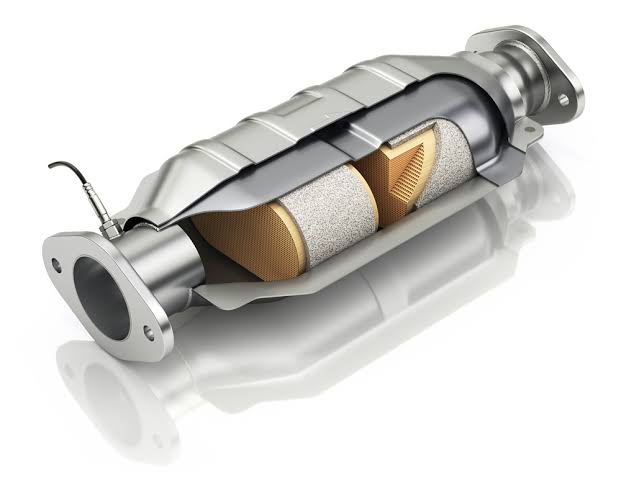When it comes to your car’s exhaust system, the catalytic converter (often called the "catalyst") plays a crucial role in reducing harmful emissions. However, when it fails, it can lead to performance issues and even legal problems. In this blog post, we’ll explore **how a catalytic converter works** and **what happens when it goes bad**.
What Does a Catalytic Converter Do?
The catalytic converter is an essential part of your car’s exhaust system. Its main job is to **convert harmful pollutants into less harmful gases** before they exit the tailpipe. Here’s how it works:
1. Reduces Harmful Emissions
The catalyst contains precious metals like platinum, palladium, and rhodium,which facilitate chemical reactions that break down pollutants:
- Carbon monoxide (CO)→ Converted into carbon dioxide (CO₂)
- Hydrocarbons (HC)→ Converted into water (H₂O) and CO₂
- Nitrogen oxides (NOx) → Broken down into nitrogen (N₂) and oxygen (O₂)*
2. Helps Meet Environmental Regulations
Catalytic converters are mandatory in most countries to comply with emission standards. Without one, your car would release excessive pollution, contributing to smog and health problems.
3. Improves Fuel Efficiency (Indirectly)
A properly functioning catalytic converter ensures optimal exhaust flow, helping the engine run efficiently. A clogged or failing converter, however, can reduce fuel economy.
Symptoms of a Bad Catalytic Converter
A failing catalytic converter can cause several noticeable problems:
1. Check Engine Light
A faulty catalyst often triggers the **check engine light** due to oxygen sensor readings detecting improper exhaust gas conversion.
2. Reduced Engine Performance
- Loss of power– A clogged converter restricts exhaust flow, making the engine work harder.
- Poor acceleration– You may notice sluggish response when pressing the gas pedal.
3. Unusual Noises
A failing catalytic converter can produce a rattling noise (if the internal honeycomb structure breaks apart) or a loud roaring sound (if it’s clogged).
4. Increased Emissions & Failed Smog Test
A bad converter won’t filter pollutants properly, leading to **higher emissions and a failed emissions test.
5. Sulfur Smell (Rotten Eggs Odor)
If the catalyst isn’t processing hydrogen sulfide (a byproduct of fuel combustion), you may notice a strong rotten egg smell from the exhaust.
6. Overheating
A clogged converter traps heat, causing the exhaust system to overheat, which can damage other components.
What Causes a Catalytic Converter to Fail?
Several factors can lead to catalytic converter failure:
- Engine misfires– Unburned fuel can overheat and damage the catalyst.
- Oil or coolant leaks – Contaminants can coat the converter, reducing its efficiency.
- Poor-quality fuel – Low-grade gasoline may leave harmful deposits.
- Physical damage– Road debris or impacts can crack the converter.
- Age & wear – Over time, the metals inside degrade, reducing effectiveness.
What to Do If Your Catalytic Converter Fails?
If you suspect a bad catalytic converter:
1. Scan for error codes (e.g., P0420 or P0430) using an OBD2 scanner.
2. Check for physical damage or unusual smells/noises.
3. Replace or clean the converter – In some cases, a fuel additive can help, but severe damage requires replacement.
Since catalytic converters contain precious metals, they can be expensive to replace. However, driving with a bad one can hurt your engine, reduce fuel efficiency, and lead to fines for emissions violations.
Final Thoughts
The catalytic converter is a small but vital part of your car’s exhaust system, keeping emissions in check and ensuring smooth engine performance. If you notice any signs of failure, address the issue promptly to avoid costly repairs and stay compliant with environmental laws.
Has your car been acting sluggish or smelling strange? It might be time to check the catalytic converter!
Do you have experience with a failing catalytic converter? Share your thoughts in the comments!
🚗💨


Comments
Post a Comment
Wish to leave a message?